Mouthwatering bowls of spicy beef ramen noodle soup with tender marinated steak pieces, in a deeply rich and savory spicy beef broth.
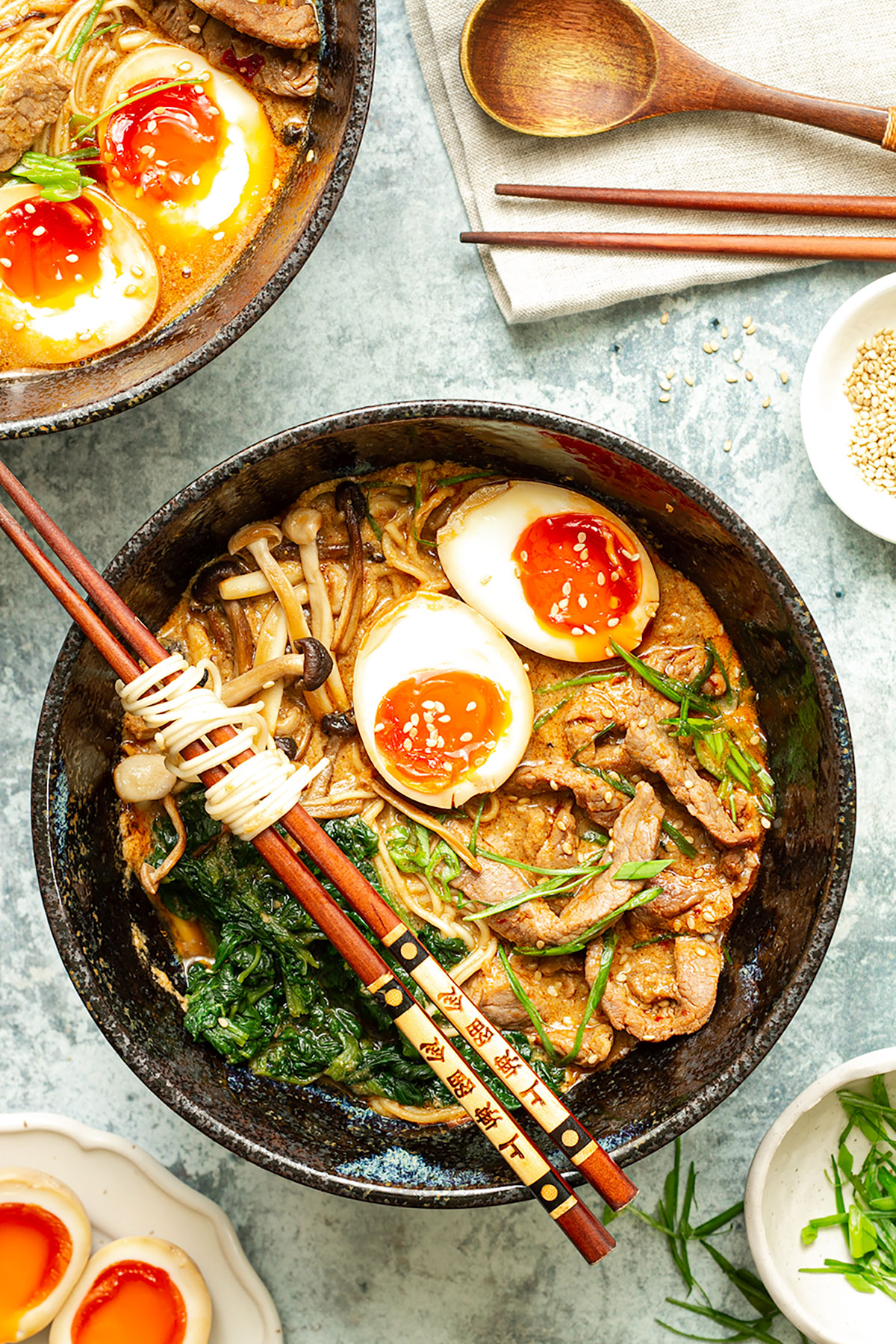
This recipe will show you how to transform simple sirloin steak and ordinary beef broth into the best bowls of rich umami deliciousness in just 30 minutes (plus marinating time).
For more quick and easy noodle soups to warm your body and soul, try my Easy Chicken Miso Ramen, Prawn Pho and Chilli Chicken Noodle Soup.
The post contains additional information and helpful tips to ensure the recipe turns out great the first time. Please use the link above to jump to the recipe card at the end if you are in a hurry!
Jump to:
4 reasons why you'll love this recipe:
- Tender pieces of beef infused with the delicious flavor of the soy and mirin marinade
- A deliciously spicy and rich broth
- Warming, comforting and satisfying
- Easy to put together. Ready in 30 minutes
🛒 Ramen Soup Ingredients:
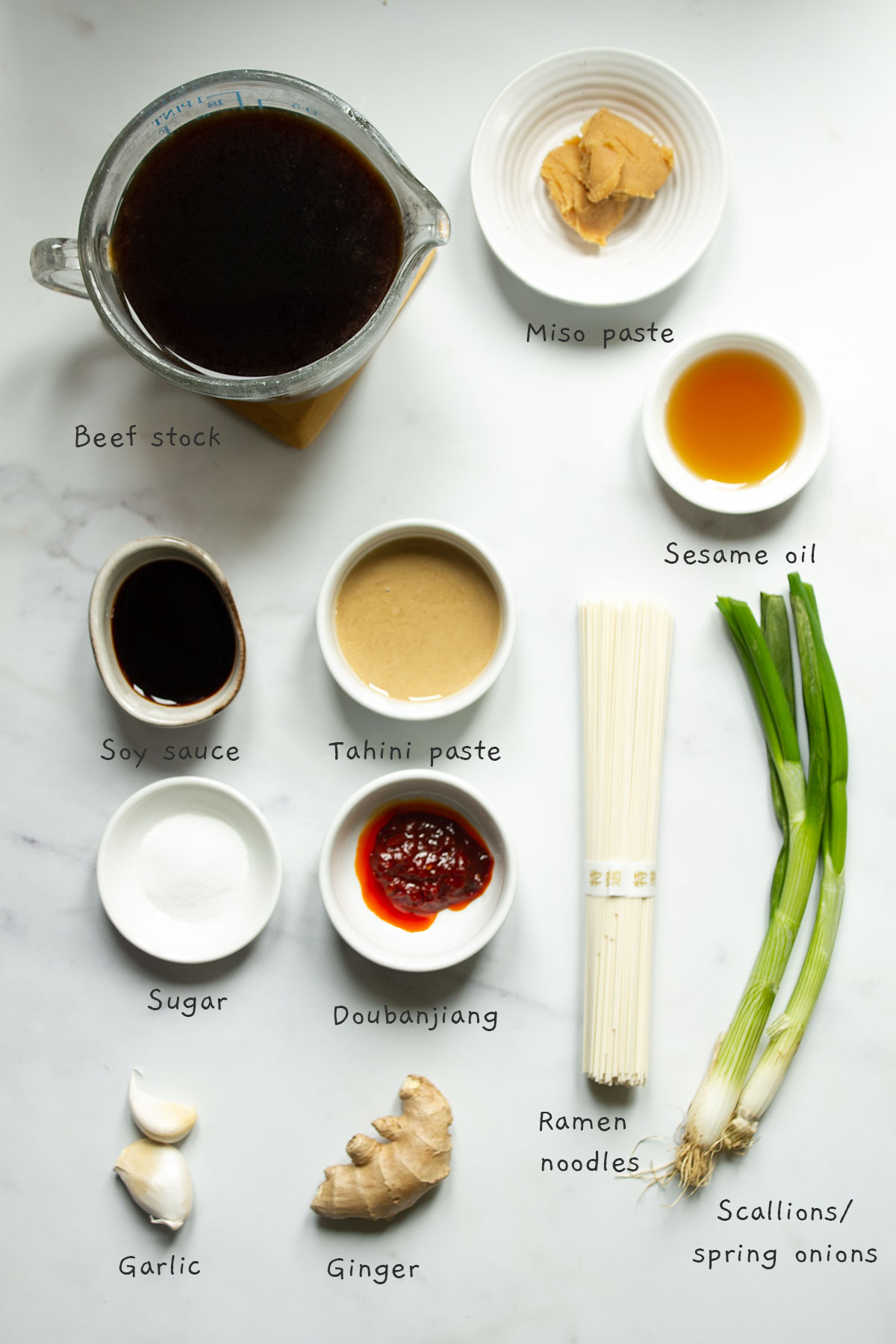
Spicy Ramen Tare:
Ramen tare is a soup base mix that adds depth of flavour to the broth. The tare in the recipe is made with grated garlic, scallions/spring onions (white parts only) and fresh ginger mixed with miso, soy sauce, sesame oil, doubanjiang (or chilli oil) and sugar.
- Miso paste: White miso paste has a light and sweet flavor profile that complements the beef ramen broth. It is also the most readily available and you should be able to find it in your local supermarket/store.
- Tahini: Japanese Ramen recipes often call for sesame paste, which can be difficult to find so I use tahini paste to bring a creamy richness to the broth.
- Doubanjiang chili paste or chili oil: Doubanjiang, a spicy Chinese bean paste, adds a slightly sweet umami flavor and heat to the broth. You can purchase it online or from an Asian grocery store. The amount in this recipe gives the soup a medium level of heat. Feel free to reduce or omit it if you are sensitive to spice.
Beef stock:
The recipe has been tested with beef stock powder and fresh store-bought beef stock, but of course, you can use homemade beef stock too.
Noodles:
Fresh ramen noodles are great if you have them, but dry noodles are often more accessible and will work well. You can use the instant noodles that typically come with Ramen flavor packets if plain noodles aren't available.
Ramen Soup Toppings
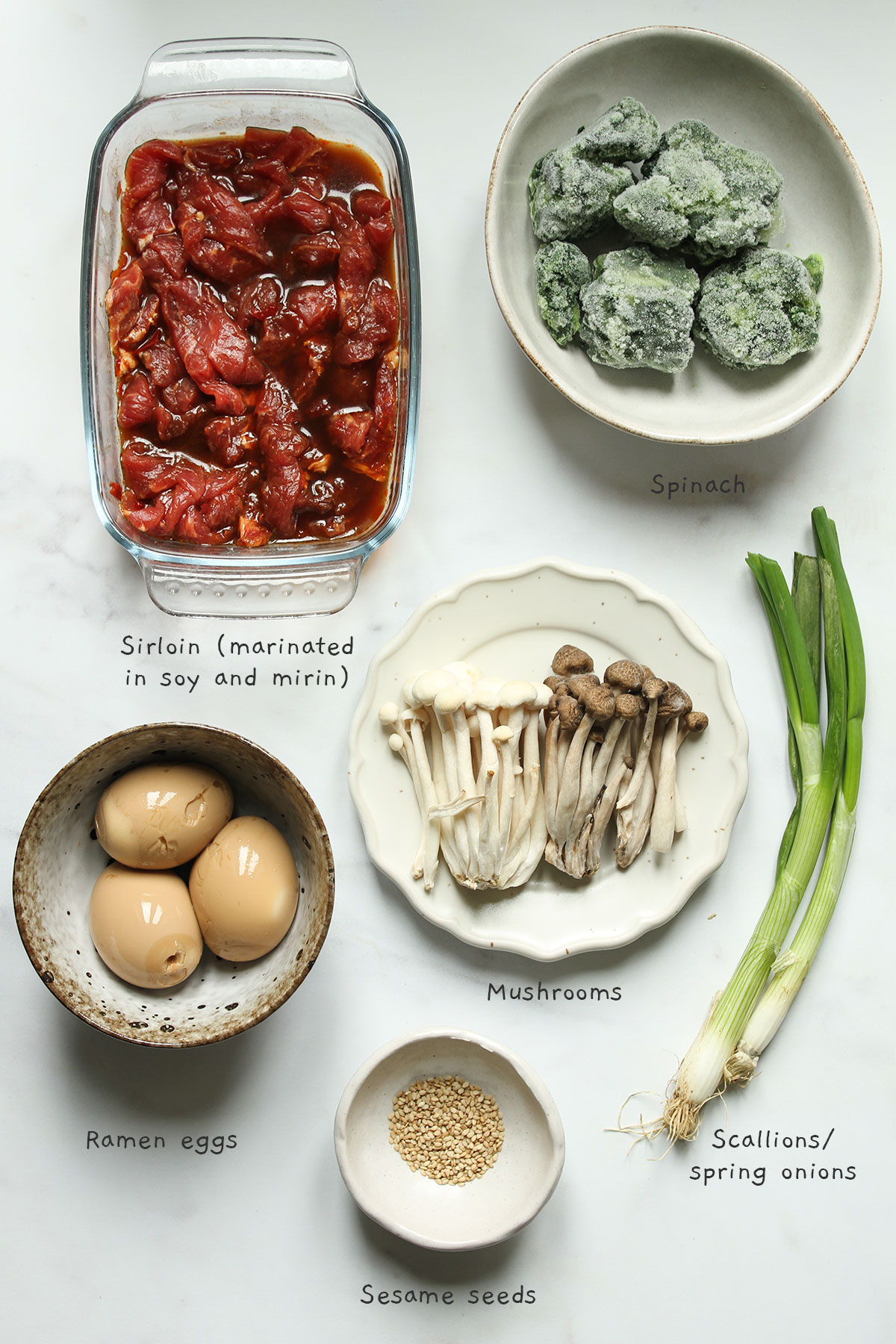
- Beef: I use Sirloin because it's lean, tender, flavourful, and cooks quickly.
- Cooked spinach: fresh or frozen are both fine to use.
- Fried mushrooms: for extra umami flavour that tastes great with the rich miso beef broth. Choose whichever mushrooms you fancy, enoki, button and shiitake mushrooms all work well.
- Eggs: I love to add a Soy Soft Boiled Egg (Nitamago) to each bowl. You can use plain non-marinated soft cooked eggs, simmered for 6-7 minutes.
- Green parts of the green onions (spring onions)
- Sesame seeds
Substitutions:
Note that the recipe has not been tested with all the substitutions and variations below, so the results cannot be guaranteed.
- Doubanjiang: substitute with Chinese chilli oil, regular chilli oil, hot sauce, sweet chili sauce, or red pepper flakes.
- Beef stock: you can use chicken broth or veg stock instead. The broth will still taste good, but won't be as rich.
- Noodles: Egg noodles are the best option if you don't have ramen noodles. You can also use gluten-free ramen or egg noodles.
- Beef: Flank steak is also a good choice. You can also use rump steak, but it's not the best option. The higher amount of connective tissue in rump steak can cause it to have a chewier texture. Just make sure you cut it thinly and cook on a high heat. Ribeye is another good option but is more expensive. You'll also need to remove the fat before cooking.
- Spinach: can be swapped for other green veggies like pak choi, choi sum, cabbage or broccoli.
Variations:
- Use ground beef as a speedy alternative to steak.
- Switch up the veggies. Try bell pepper, beans, or corn.
- Non-spicy made without chilli bean pasta or chilli oil.
🧑🍳 Recipe steps
*Be sure to see the recipe card below for the full ingredients list & instructions! *
Step 1: Marinate the steak. In a small bowl whisk the mirin, soy sauce, sugar, and Doubanjiang or chilli oil in a bowl, add the steak pieces, and leave to marinade for 30 minutes or overnight.
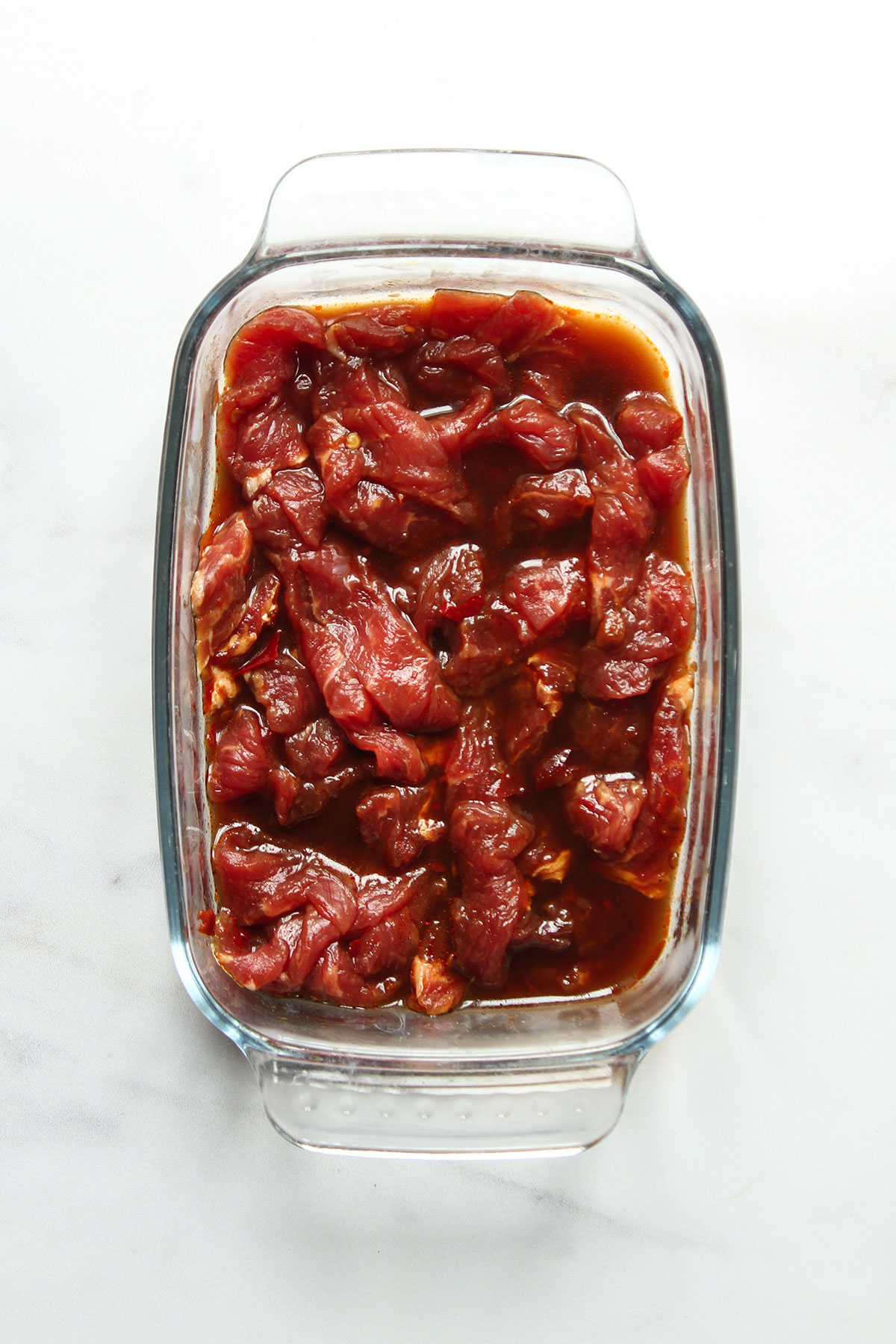
Step 2: Cook the mushrooms, spinach and steak:
Place a large saucepan pan on a medium-high heat, add oil and fry the mushrooms for a few minutes until brown, and set aside. Toss in the spinach and fry for a few minutes until wilted. Then sear the beef strips until brown and set aside.
Wondering how to cook your steak to your ideal level of doneness. My steak doneness guide will show you how to cook your steak to perfection whether you prefer rare, medium or well-done.
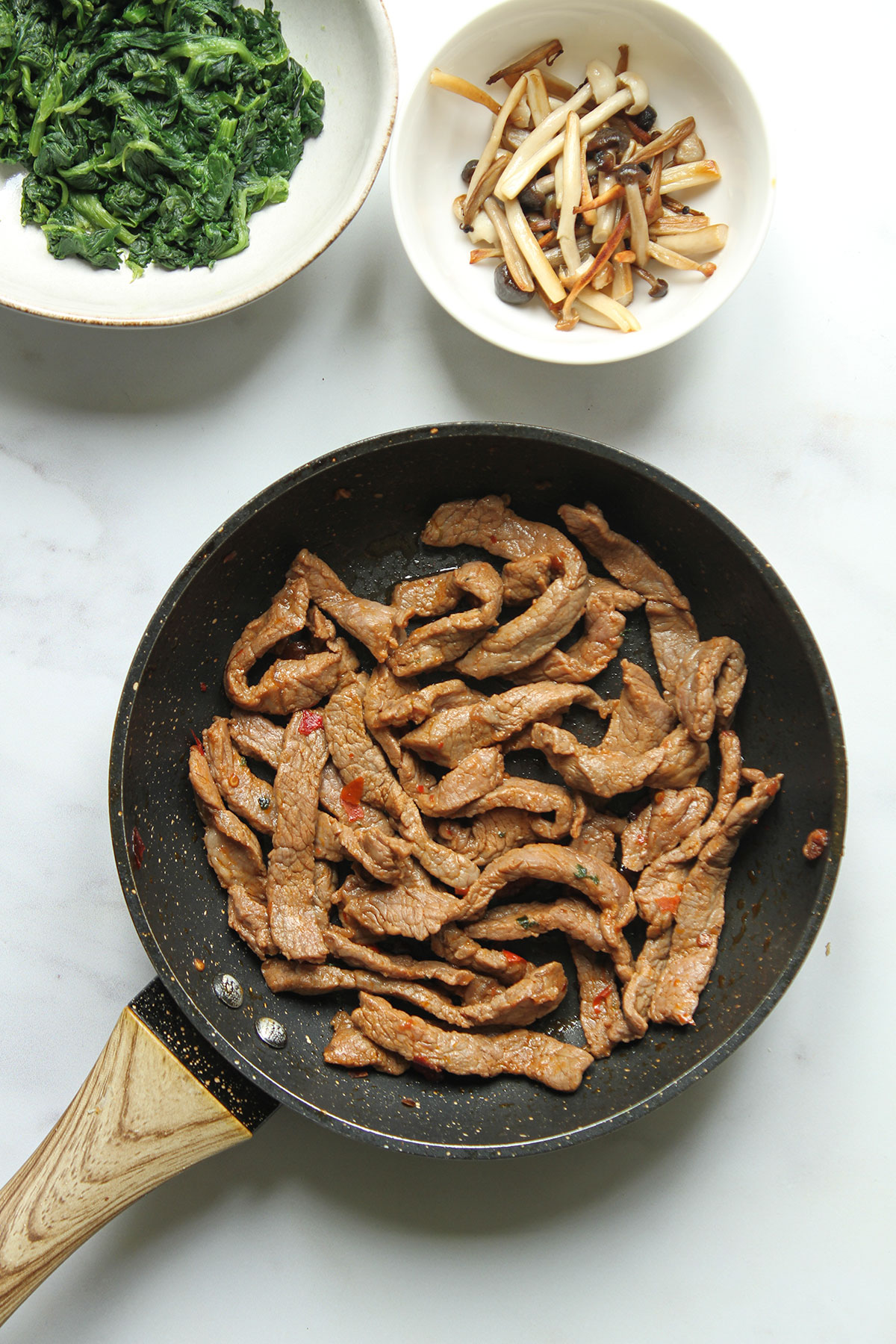
Step 3: Make the tare: Add a little more oil to the pot and fry the garlic, scallions/spring onions and ginger for a minute or two until fragrant. Then stir in the miso paste, tahini, sesame oil, soy sauce, Doubanjiang or chilli oil and sugar.
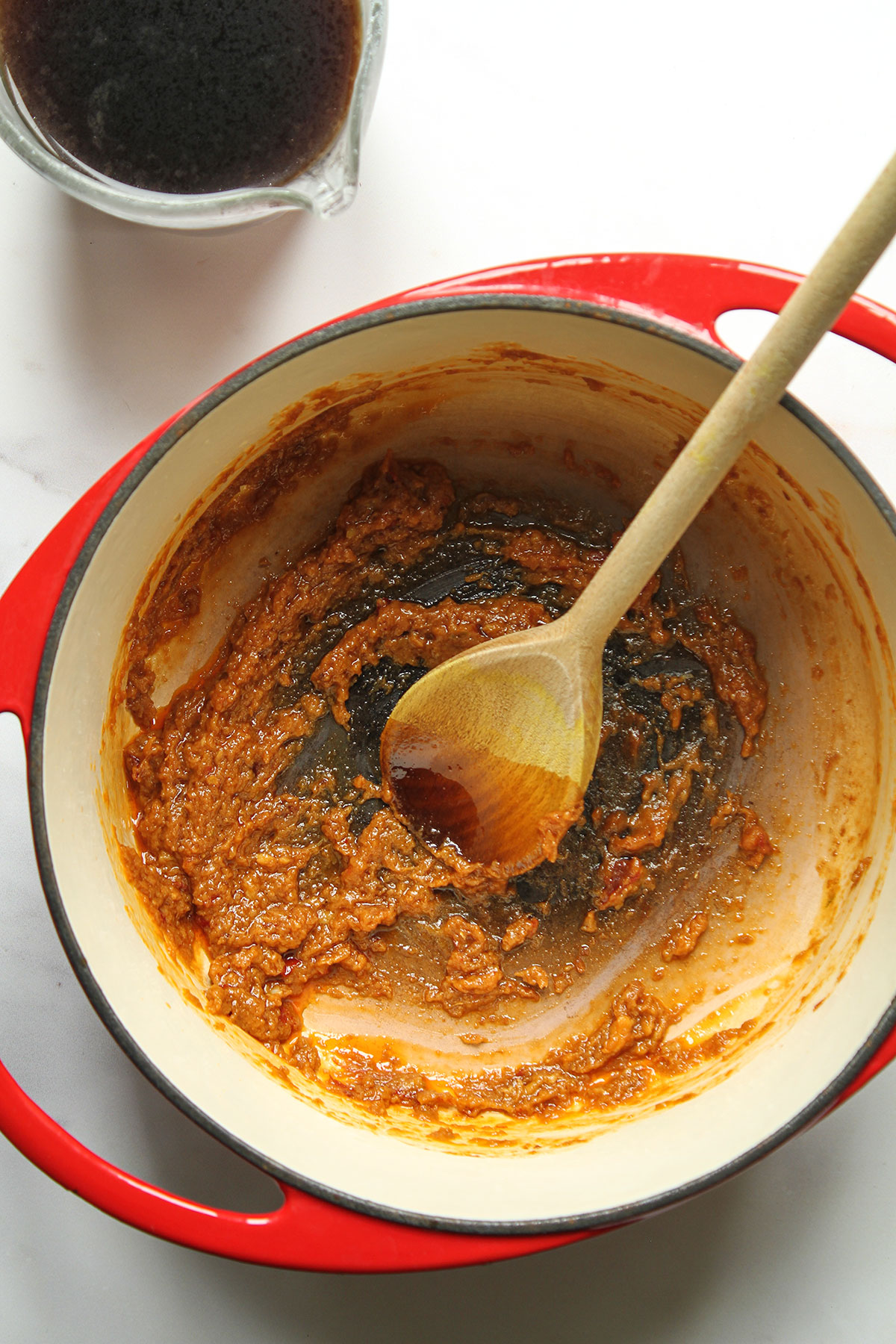
Step 4: Make the broth: Pour in the beef stock and leave to simmer on a low heat with the lid on for 10 minutes. Cook the noodles according to the packet instructions.
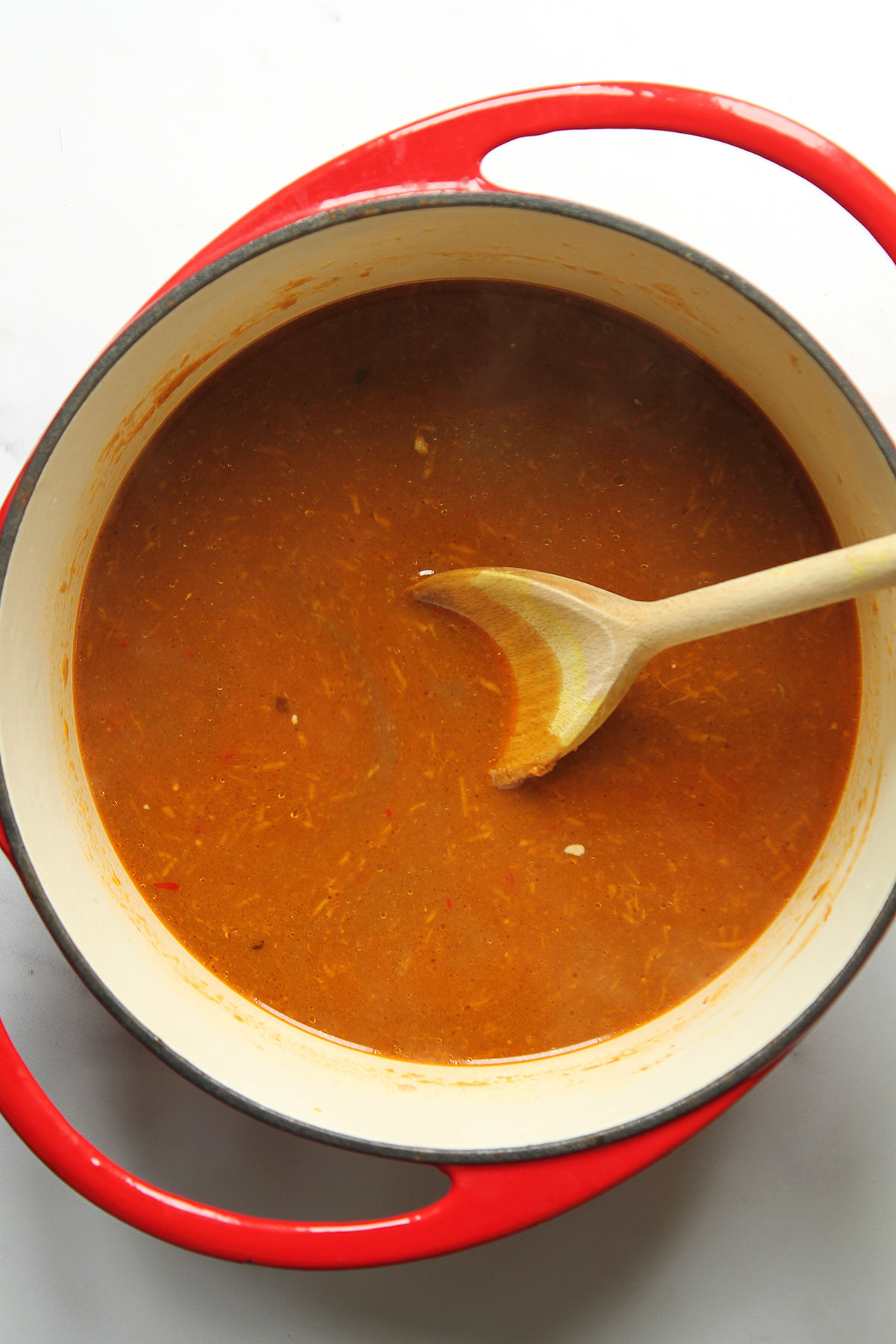
Tips for cooking ramen noodles
- Wait to cook the noodles. Put them on a few minutes before you plan to assemble the ramen.
- Don't salt the water as you would for pasta. The broth will provide the flavour you need.
- Don't cook the noodles in the broth. This shortcut might be tempting, but the starchiness of the noodles will alter the flavour of your broth.
- Cook the noodles until they are still a little hard. They will cook a little more when you pour on the hot broth.
Step 5: Assemble: Add a portion of cooked noodles to each bowl, pour on the broth and top each bowl with beef, mushrooms, spinach, ramen eggs, sesame seeds, and the green parts of the scallions/spring onions.
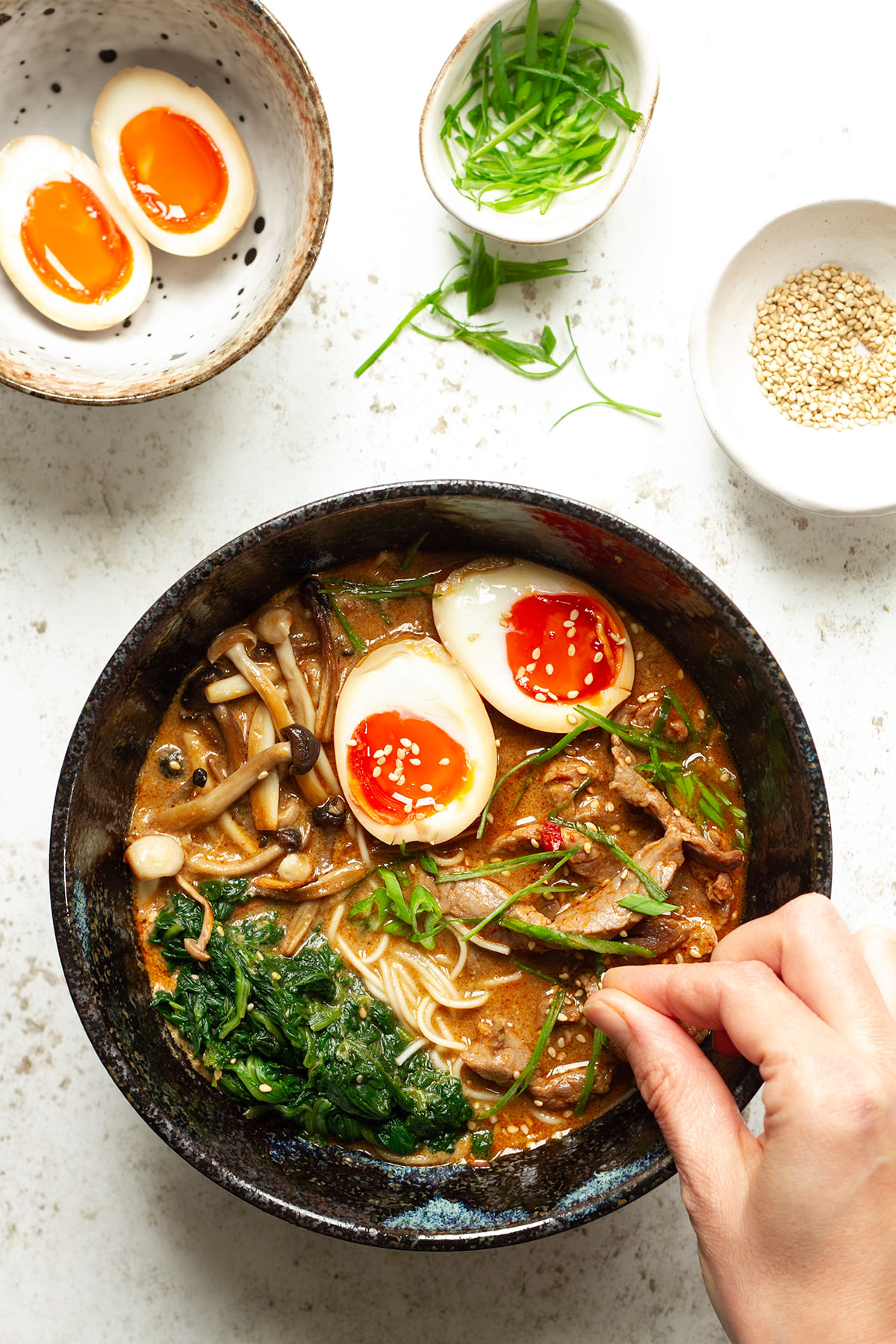
🍽️ Serving suggestions
Beef ramen is hearty, satisfying and can be enjoyed as a standalone meal or with sides:
- Edamame beans
- Crispy Rice Sushi With Spicy Salmon and Avocado
- Miso Glazed Aubergine (Eggplant)
- Crunchy sushi rolls
- Gyoza or steamed dumplings
Expert Tips
- Don't skip the beef marinade - it takes the ramen to a whole new level, trust me
- Have your toppings ready - to ensure you get the ramen on the table while it's still, hot and steamy
- Wait to cook the noodles - plan to drain them just before you assemble the ramen
- Serve as soon as the ramen is assembled - the noodles will go soggy if you leave it hanging around
🙋 Recipe FAQs
Ramen tastes best when it's fresh. I don't recommend sticking an assembled bowl of ramen in the fridge to eat later. It will be very soggy and sad.
If you want to make it ahead, you can prepare the broth, pop it in an airtight container and store in the fridge for up to 3 days. The same goes for the cooked beef, spinach and ramen eggs. When you're ready to dig in, just warm up the broth on the stove, cook up some fresh noodles, and throw on the toppings.
You can also freeze the broth for up to 3 months, but keep in mind that freezing assembled ramen won't work. Ramen tastes best when it's fresh. I don't recommend sticking an assembled bowl of ramen in the fridge to eat later. It will be very soggy and sad.
The doubanjiang or chili oil adds a medium kick to the ramen. You can tweak the amount to match your taste, or if you're not into spicy food, you can skip it. The doubanjiang or chili oil adds a medium kick to the ramen. You can tweak the amount to match your taste, or if you're not into spice, you can skip it.
Beef ramen can be a healthy choice. To make it more nutritious and cut down on the fat and sodium, use whole wheat noodles, choose a broth that's lower in sodium, switch out fattier meats for leaner options like chicken or tofu, and top with green veggies like steamed spinach or pak choi.
When it comes to ramen toppings, chashu pork is the most common and well-loved. It's like a fusion of Chinese char siu roast pork, but the Japanese version takes it to a whole new level. It's slow-cooked in a sweet soy and mirin sauce until it's so tender it falls apart. That said, beef and chicken can also be super tasty. It really depends on your preference.
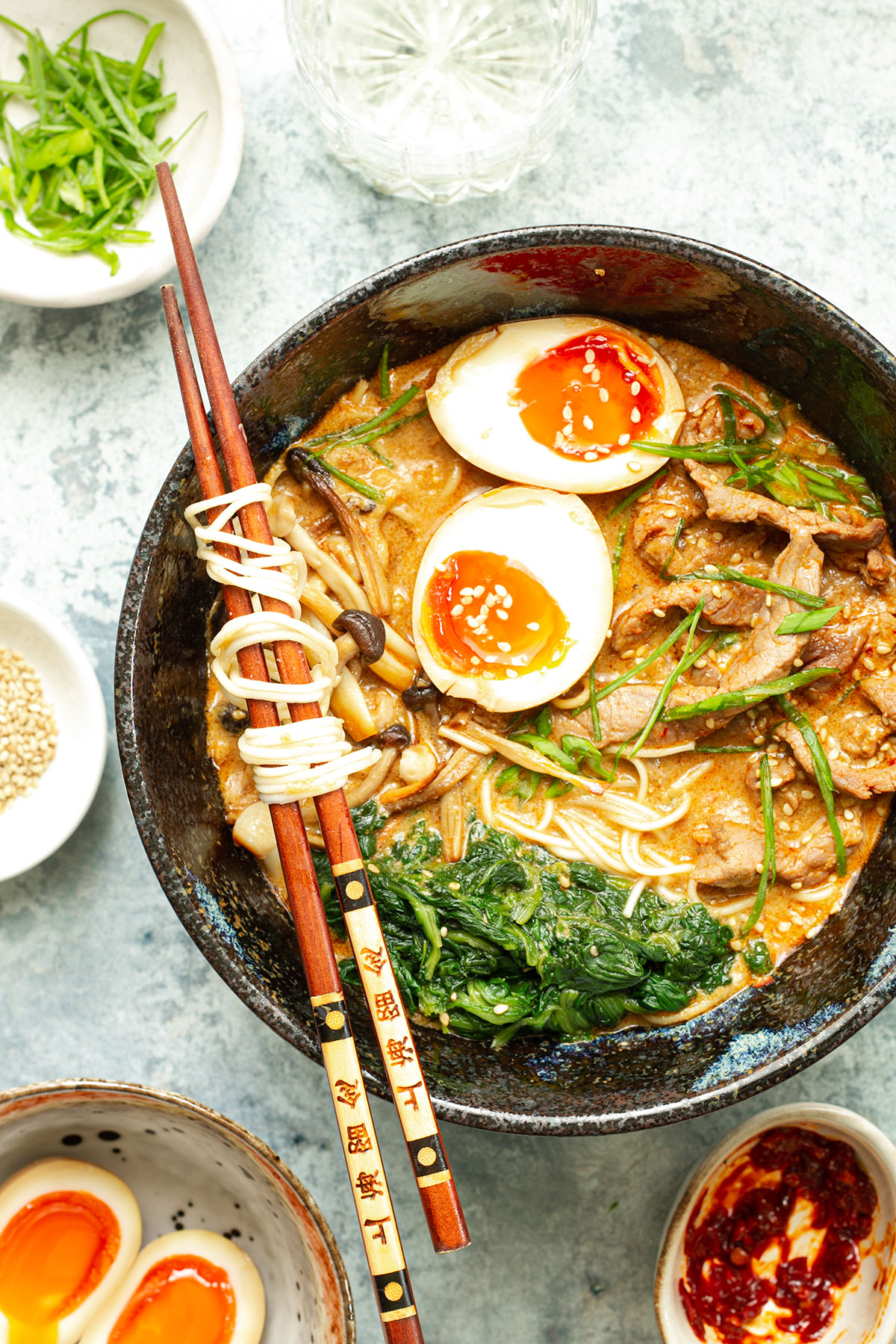
😋 Check out my other noodle soup recipes
Did you try this recipe?
It would be really great if you could leave a comment and a star rating ⭐️. I would love to receive your feedback and know that other readers find it helpful too.
Don't forget to tag #knifeandsoulrecipes on Instagram or @knifeandsoul on Pinterest!
📖 Recipe
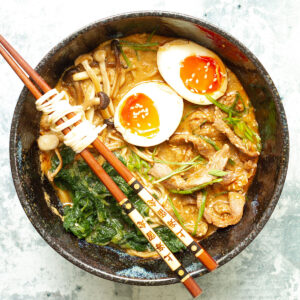
Spicy Beef Ramen Noodle Soup
Ingredients
Beef & marinade
- 7 oz (200 g) sirloin steak chilled (Note 1)
- 2 tbsp soy sauce (Note 2)
- 2 tbsp mirin (Note 3)
- 1 tsp sugar
- ½ tbsp Doubanjiang or chilli oil (optional)
Ramen ingredients
- 2 tbsp neutral oil (Note 4)
- 2 portions ramen noodles (Note 5)
- 2 cloves garlic finely grated
- 2 scallions/spring onions (white parts only) finely grated
- 2 tsp (5 g) ginger finely grated
- 2 tbsp miso paste (Note 6)
- 1 tbsp tahini
- 1 tbsp sesame oil
- 1 tbsp soy sauce
- ½ tbsp Doubanjiang or chilli oil (optional) (Note 7)
- 1 tsp sugar (Note 8)
- 2.5 cups (600 ml) beef stock (Note 9)
Toppings
- 3 cups (100 g) spinach (Note 10)
- 1 cup (100 g) mushrooms
- scallions/spring onions (green parts only) thinly sliced
- 2 soft-boiled ramen eggs (optional) (Note 11)
- toasted sesame seeds
Instructions
Beef Marinade
- Remove any fat from the steak with scissors or a sharp knife and slice horizontally into 0.5 cm / ¼ inch strips. (Note 12)
- In a bowl, combine the marinade ingredients (soy sauce, mirin, sugar, and optional Doubanjiang or chilli oil) and stir until the sugar has dissolved.
- Add the steak pieces to the marinade, cover and refrigerate for at least 30 minutes. (ideally overnight)
Cook the mushrooms and steak
- Place a pan on a medium to high heat and add half of the neutral oil. Add the mushrooms once the oil is hot and fry for a few minutes until they begin to brown and set aside.
- Add the spinach to the pan, cook for a couple of minutes until wilted, and set aside.
- Add the steak strips and fry for a few minutes until brown and set aside.
Make the ramen broth
- Place a Dutch oven or large pan on a medium heat and add the remaining oil.
- Add the minced ginger, garlic and scallions/spring onion and fry for a minute or two until fragrant.
- Add the miso paste, tahini, sesame oil, soy sauce, chilli oil and sugar and stir until incorporated.
- Pour on the beef stock and allow to simmer for 10 minutes.
- Meanwhile, cook the ramen noodles according to packet instructions (plan to have them done for when the ramen is ready to be assembled). Drain them while they are still slightly underdone. They will cook a little more when you add them to the broth.
Assemble
- Add a portion of cooked ramen noodles to each bowl and pour on the hot broth.
- Top each bowl with the cooked beef, spinach, mushrooms, soft boiled eggs and sliced scallions/spring onions. Serve immediately.
Notes
- Beef: I use sirloin because it's lean, tender, flavourful, and cooks quickly. Flank steak is also a good choice. You can use rump steak, but it's not the best option because it can have a chewier texture, so you'll need to cut it thinly and cook on a high heat. Ribeye is another good option, but is more expensive. You'll need to remove the fat before cooking.
- Soy sauce: Use regular or light. Dark will be too rich.
- Mirin: Substitute with Chinese cooking wine OR dry sherry + 1 tsp white sugar.
- Oil: Use a neutral oil with a high burn point like sunflower, vegetable, canola or ground nut.
- Ramen noodles: Use fresh or dry or substitute with egg noodles. For gluten-free options use gluten-free ramen noodles or rice noodles.
- Miso paste: White miso paste is best and the most readily available. Avoid using red miso, it will make the broth too strong.
- Doubanjiang: A spicy Chinese bean paste that also brings a slightly sweet umami flavor. Substitute with Chinese chilli oil or leave it out if you prefer non-spicy ramen.
- Sugar: Used to balance out the saltiness of the broth rather than as a sweetener.
- Beef stock: Can use homemade or store-bought.
- Spinach: Use fresh or frozen.
- Ramen eggs: Make my Easy Soy Marinated Ramen Eggs or cook up regular soft-boiled eggs in simmering water for 6 minutes, leave to chill in icy or cold water and peel carefully.
- Slicing the beef: It is easier to cut the steak into thin slices when it's cold so it's best to cut it as soon as you remove it from the fridge.




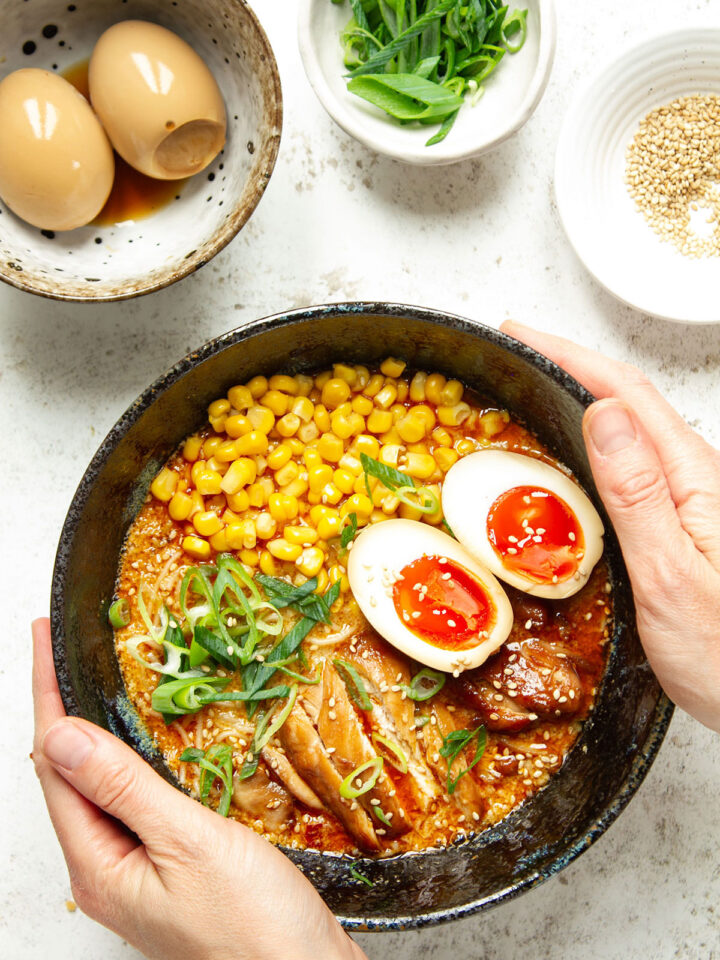
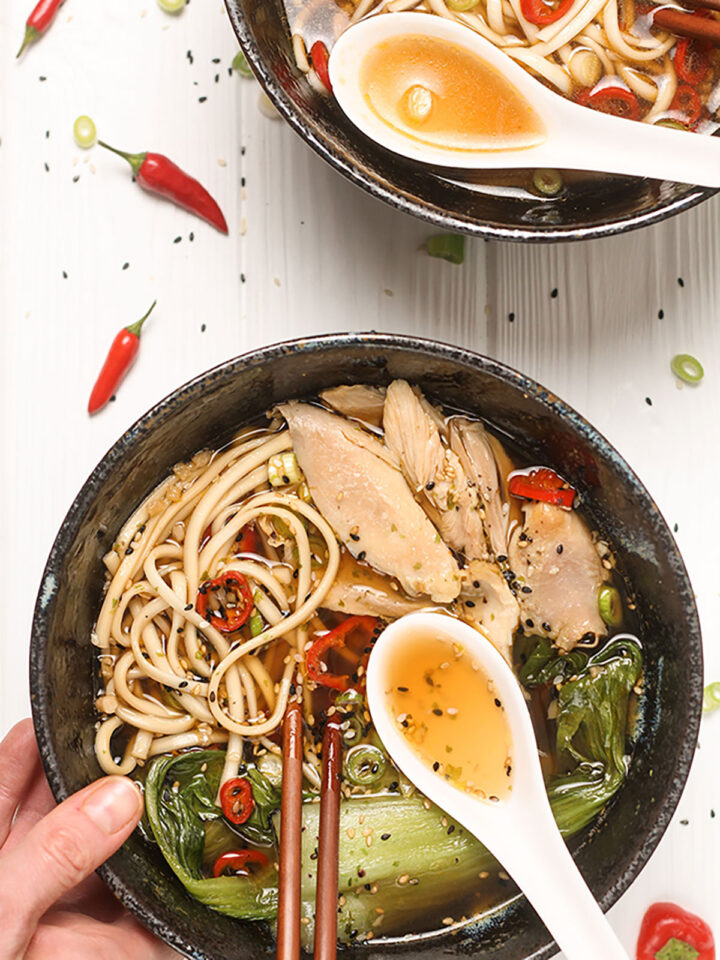

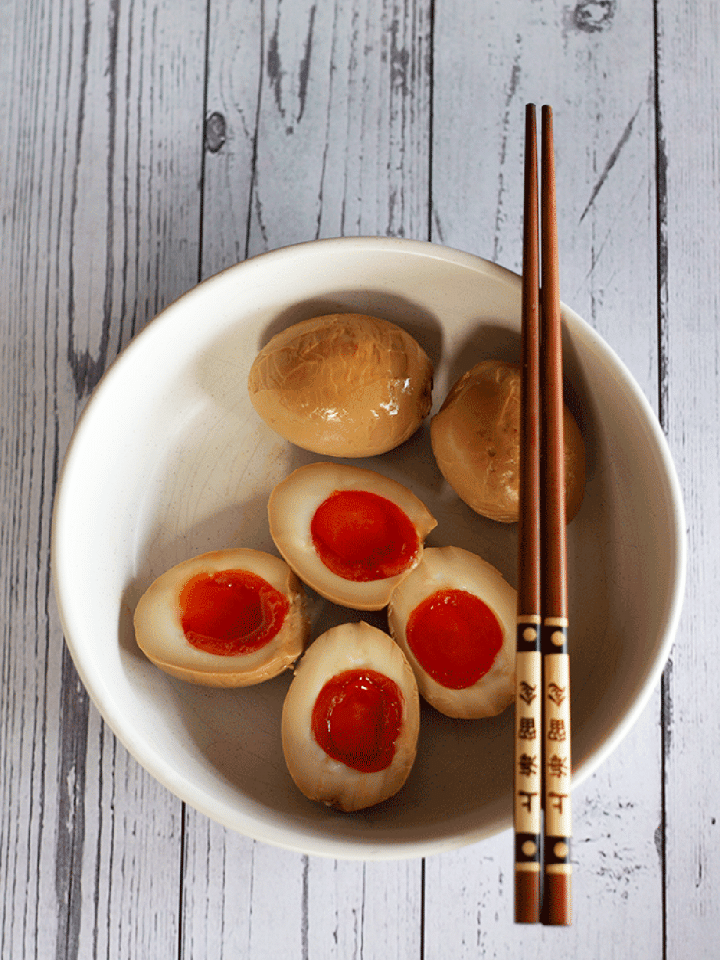
Leave a Reply